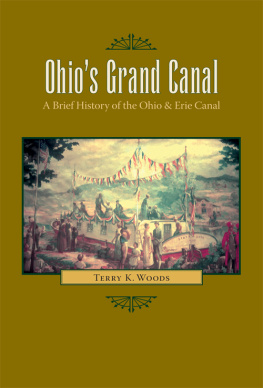Jack Gieck - Early Akrons Industrial Valley: A History of the Cascade Locks
Here you can read online Jack Gieck - Early Akrons Industrial Valley: A History of the Cascade Locks full text of the book (entire story) in english for free. Download pdf and epub, get meaning, cover and reviews about this ebook. year: 2015, publisher: The Kent State University Press, genre: Detective and thriller. Description of the work, (preface) as well as reviews are available. Best literature library LitArk.com created for fans of good reading and offers a wide selection of genres:
Romance novel
Science fiction
Adventure
Detective
Science
History
Home and family
Prose
Art
Politics
Computer
Non-fiction
Religion
Business
Children
Humor
Choose a favorite category and find really read worthwhile books. Enjoy immersion in the world of imagination, feel the emotions of the characters or learn something new for yourself, make an fascinating discovery.
- Book:Early Akrons Industrial Valley: A History of the Cascade Locks
- Author:
- Publisher:The Kent State University Press
- Genre:
- Year:2015
- Rating:5 / 5
- Favourites:Add to favourites
- Your mark:
Early Akrons Industrial Valley: A History of the Cascade Locks: summary, description and annotation
We offer to read an annotation, description, summary or preface (depends on what the author of the book "Early Akrons Industrial Valley: A History of the Cascade Locks" wrote himself). If you haven't found the necessary information about the book — write in the comments, we will try to find it.
A pictorial history of a piece of Ohio s Canal Heritage
In this study of Akron s Cascade Locks, canal historian Jack Gieck examines the story of this remarkable lock system, including a look at early-nineteenth-century entrepreneurs who exploited the precipitous terrain to found one of the first industrial centers in the American Midwest.
A steep staircase of sixteen locks was required to raise canal boats 149 feet in a single mile in order to reach the Akron Summit the highest point on the 309-mile-long Ohio & Erie Canal. But what was considered by some to be an impossible feat of engineering represented a commercial opportunity for others, beginning with Dr. Eliakim Crosby, who built a two-mile millrace from a dam on the Little Cuyahoga River at Middlebury to his Stone Mill at Lock 5 on the canal. After turning Crosby s millstones, the water became the Cascade Race, flowing down the steep slope parallel to the canal, giving rise to more than a dozen industries, including several iron furnaces, a foundry, a woolen mill, a furniture factory, a distillery, several grist mills, and two rubber plants all of them turned by waterpower. And they shipped their products to markets from New York to new Orleans via the canal running by their back doors.
Early Akron s Industrial Valley is illustrated with photographs from the author s collection and the archives of the Canal Society of Ohio, the Ohio Historical Society, the University of Akron, and the Cascade Locks Park Association. It contains a guide for Canalway hikers and bikers on the towpath through Akron s Cascade Locks Park and includes original maps by Chuck Ayers. This book will be welcomed by historians and engineers as well as by the many who find the surviving canals to be fascinating symbols of Ohio s heritage.
Jack Gieck: author's other books
Who wrote Early Akrons Industrial Valley: A History of the Cascade Locks? Find out the surname, the name of the author of the book and a list of all author's works by series.












